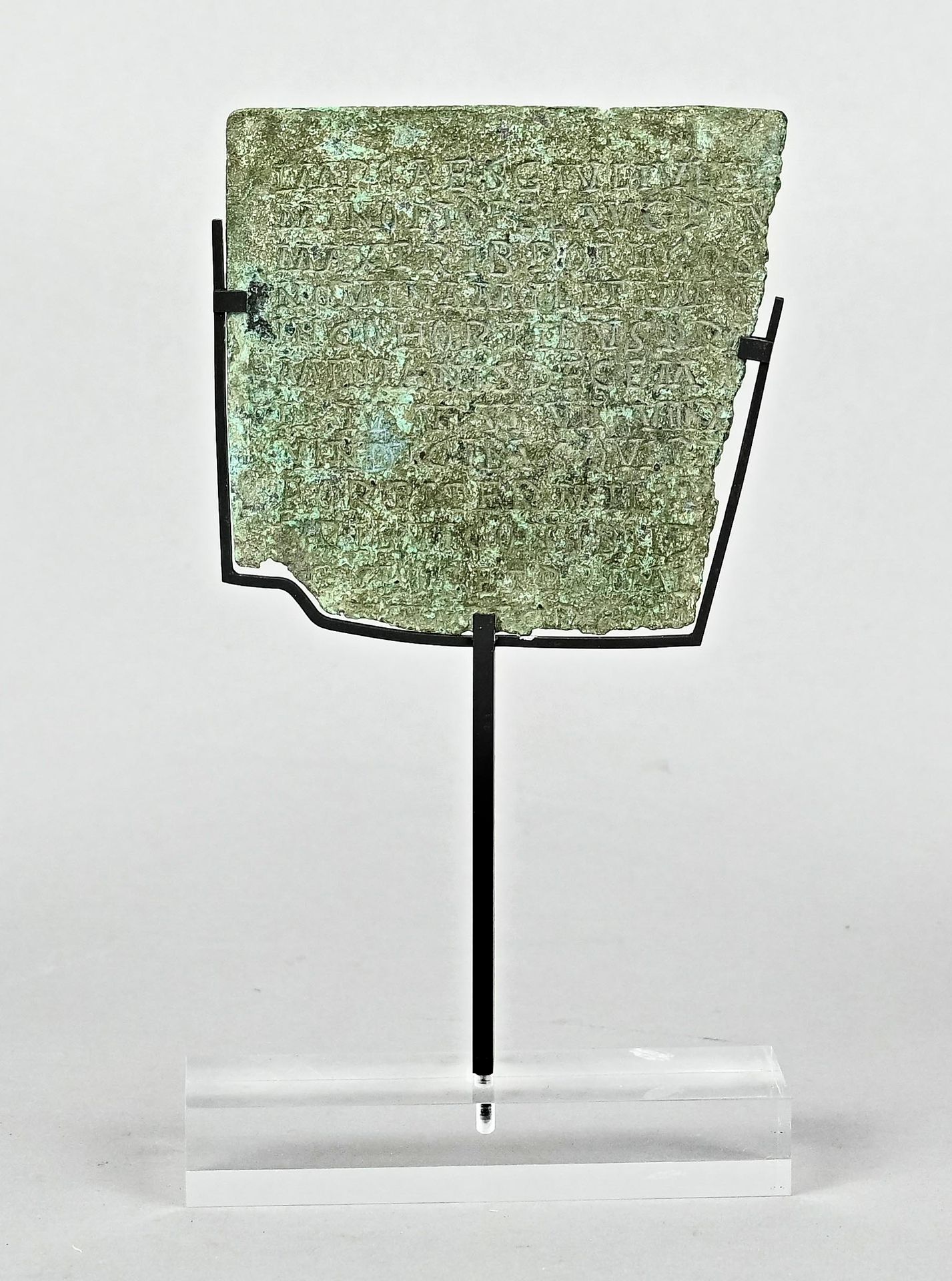Description
310 (3-123) Military Diploma, Roman, 235 - 238 AD, This is probably a military diploma of Maximinus Thrax from 236 AD; Maximinus reigned from 235-238. Around this time all free inhabitants of the empire already had Roman citizenship, so the purpose of the diploma is limited to granting the beneficiary the right to marry a non-Roman woman. The titular of the emperor can be supplemented (Pater patriae), on the other hand his epithets offer the problem that they are set in dative (or ablative); this is quite outlandish for a military diploma, a mistake of the scribe? The unit mentioned is the Praetorian Guard of Maximinus; its former members obviously received the right mentioned; admittedly, the lists of names are missing (the word 'Maxim' on the inside of the document could be the beginning of one). The attestation formula on the inside page is the one common on military diplomas of the 2nd and 3rd c..; it is found on almost all texts of this kind from the same period. Circumscription: Imp[erator] Caes[ar] G[aius] Iuli[us] V[erus Maxi]/. mino Pio Fel[ix] Aug[ustus] pon[tif]/ max[imus] trib[unicia] pot[estate] secundum co[n]s[ul]/ nomina militum q[ui] in cohortibus pra[etoris Maxi]/ mimianis decem tertio quarto quinto sexto septimo octavo decimo/ vindicibus qui pi[e et] fortiter milit[averunt ius]/ tribui conubii d[umtaxat sin]/ gulis et primi[s].... Translation: Imperator Caesar Gaius Iuliu(s) V(erus Maxi)minus, the pious and fortunate, chief priest, endowed for the second time with tribunician power, consul, (father of the fatherland). The names of the soldiers who served faithfully and bravely in the ten Maximinian Praetorian cohorts - I, (II), III, IV, V, VI, VII, VIII, X, the (faithful and) protective: I have conferred upon them the right of marriage, provided that they are married to one and only the first (wife)...
935
310 (3-123) Military Diploma, Roman, 235 - 238 AD, This is probably a military diploma of Maximinus Thrax from 236 AD; Maximinus reigned from 235-238. Around this time all free inhabitants of the empire already had Roman citizenship, so the purpose of the diploma is limited to granting the beneficiary the right to marry a non-Roman woman. The titular of the emperor can be supplemented (Pater patriae), on the other hand his epithets offer the problem that they are set in dative (or ablative); this is quite outlandish for a military diploma, a mistake of the scribe? The unit mentioned is the Praetorian Guard of Maximinus; its former members obviously received the right mentioned; admittedly, the lists of names are missing (the word 'Maxim' on the inside of the document could be the beginning of one). The attestation formula on the inside page is the one common on military diplomas of the 2nd and 3rd c..; it is found on almost all texts of this kind from the same period. Circumscription: Imp[erator] Caes[ar] G[aius] Iuli[us] V[erus Maxi]/. mino Pio Fel[ix] Aug[ustus] pon[tif]/ max[imus] trib[unicia] pot[estate] secundum co[n]s[ul]/ nomina militum q[ui] in cohortibus pra[etoris Maxi]/ mimianis decem tertio quarto quinto sexto septimo octavo decimo/ vindicibus qui pi[e et] fortiter milit[averunt ius]/ tribui conubii d[umtaxat sin]/ gulis et primi[s].... Translation: Imperator Caesar Gaius Iuliu(s) V(erus Maxi)minus, the pious and fortunate, chief priest, endowed for the second time with tribunician power, consul, (father of the fatherland). The names of the soldiers who served faithfully and bravely in the ten Maximinian Praetorian cohorts - I, (II), III, IV, V, VI, VII, VIII, X, the (faithful and) protective: I have conferred upon them the right of marriage, provided that they are married to one and only the first (wife)...
